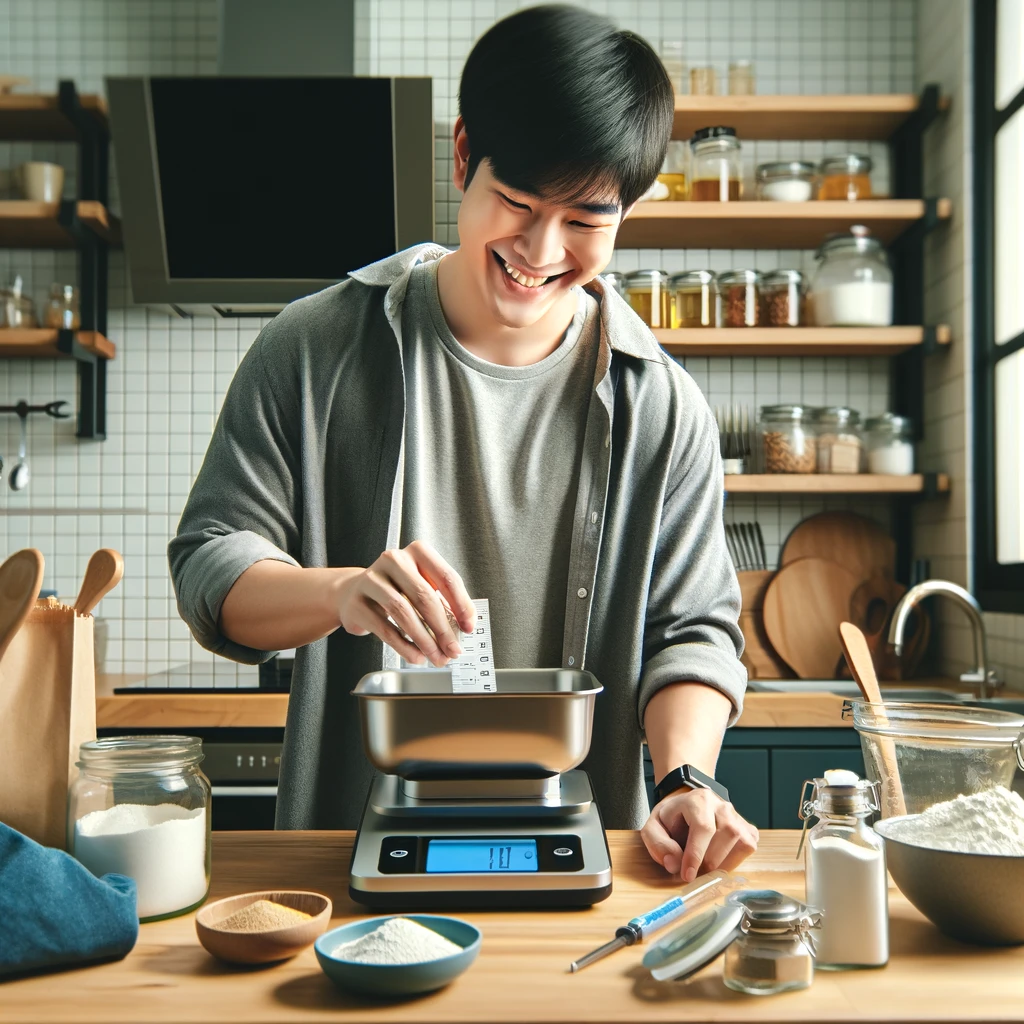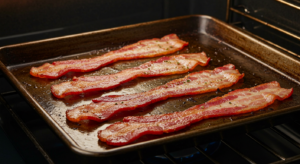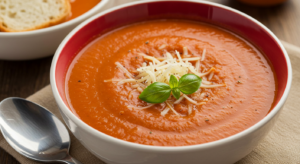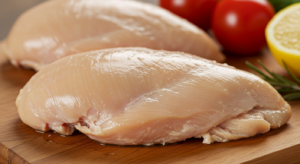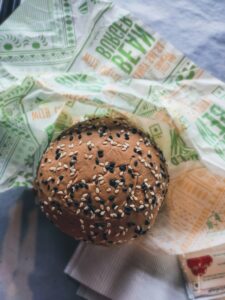Understanding volume conversions is crucial for a variety of everyday tasks, from cooking and baking to purchasing household supplies. In the culinary world, precise measurements can make or break a recipe. Thus, knowing how to convert measurements like quarts to ounces can significantly enhance your cooking accuracy and ensure you get your recipes just right.
The question, “How many ounces in a quart?” is more than just a simple query for those in the kitchen—it’s a fundamental aspect of cooking that affects the outcome of your dishes. This guide aims to provide clear, concise, and practical information on converting quarts to ounces, catering not only to professional chefs but also to everyday home cooks who aspire to perfect their culinary skills.
What is a Quart?
A quart is a unit of volume measurement used primarily in the United States to measure liquids and dry substances. The term originates from the Latin word quartus, meaning “one-quarter,” reflecting its original use as one-quarter of a gallon. Understanding this unit is essential, especially in contexts like cooking, where precise measurements are critical to achieving the desired results.
In the United States, the quart is legally defined as exactly 0.946353 liters. However, in practical cooking scenarios, it is often rounded to a simpler figure for ease of use. There are two types of quarts used in measurements:
- Liquid Quart: Used for measuring liquid substances.
- Dry Quart: Slightly larger, used for measuring dry materials.
The distinction between these types can influence the outcome of recipes and should be noted to avoid measurement errors, particularly when precision is necessary for the recipe’s success.
For international readers or recipes, it’s crucial to remember that the quart differs from the Imperial quart, which is used in the United Kingdom and is approximately 1.136 liters. This difference underscores the importance of using the correct quart measurement to ensure accuracy in recipe outcomes and other practical applications.
Conversion Basics
Converting quarts to ounces is a straightforward process once you understand the basic principles behind volume conversion. This knowledge is particularly useful in the kitchen, where precise measurements can influence the quality and taste of your dishes.
There are 32 ounces in one liquid quart in the United States measurement system. This conversion is crucial for recipes that require precise liquid measurements. To convert quarts to ounces, you simply multiply the number of quarts by 32. For example:
- 1 quart = 32 ounces
- 2 quarts = 64 ounces
- 3 quarts = 96 ounces
It’s important to note that this conversion applies to liquid measurements only. For dry ingredients, the conversion might differ slightly due to the nature of the substance being measured and the specific volume that it occupies.
For those using the Imperial system (commonly used in the United Kingdom), remember that an Imperial quart is larger than a US quart. An Imperial quart equals approximately 40 ounces. This distinction is crucial when following recipes that originate from different countries to avoid measurement discrepancies that could affect the dish’s outcome.
Step-by-Step Guide to Converting Quarts to Ounces
Converting quarts to ounces can be done quickly and accurately with these easy-to-follow steps. This guide is designed to help you understand and perform conversions confidently, whether you are scaling recipes or making informed purchasing decisions.
Step 1: Identify the Type of Quart
- Determine whether your recipe or measurement requires a liquid quart or a dry quart. As discussed, the liquid quart is used for fluids and measures up to 32 ounces, while the dry quart is used for dry ingredients.
Step 2: Determine the Number of Quarts
- Check the quantity of quarts you need to convert. This could be directly from a recipe or an estimation of the quantity needed for cooking or storage.
Step 3: Use the Conversion Factor
- Multiply the number of quarts by the conversion factor. For liquid quarts, multiply by 32 (e.g., 2 quarts x 32 = 64 ounces).
- For an Imperial quart, used primarily in the UK, multiply by 40 to convert to ounces (e.g., 2 quarts x 40 = 80 ounces).
Step 4: Double-Check Your Calculations
- It’s always a good practice to double-check your calculations to ensure accuracy, especially when cooking or baking, where precision is crucial.
Step 5: Apply the Conversion
- Once you have the converted figure, you can proceed with your recipe or use the measurement as required for your needs.
Bonus Tip: Conversion Tools
- Consider using a digital kitchen scale or a conversion calculator for quick and accurate measurements. These tools are particularly useful when dealing with large quantities or when precision is critical.
Practical Examples
Understanding how to convert quarts to ounces can be incredibly useful in many practical scenarios. Here are a few real-world examples where knowing this conversion can make a difference:
Example 1: Doubling a Soup Recipe
- Suppose your favorite soup recipe calls for 2 quarts of broth. If you want to double the recipe, you’ll need to know how many ounces that entails. Using the conversion (1 quart = 32 ounces), you calculate that you need 128 ounces of broth to double the recipe.
Example 2: Mixing Drinks for a Party
- If you’re planning to serve a punch that requires 3 quarts of juice, converting this measurement into ounces can help you determine the size of the container you need. Multiplying 3 by 32 gives you 96 ounces, which lets you choose an appropriately sized punch bowl.
Example 3: Buying Paint for a Project
- When buying paint, coverage is often indicated in quarts. If you know your project requires 80 ounces of paint, converting ounces back to quarts helps you understand how many quarts to purchase. Dividing 80 by 32 results in about 2.5 quarts.
Example 4: Filling a Fish Tank
- Aquariums often list capacity in gallons, but if you’re mixing treatment chemicals that use quart measurements, converting these to ounces can ensure you add the correct amount. Knowing your 20-gallon tank holds 80 quarts, and thus 2560 ounces, allows precise treatment.
Example 5: Cooking for Dietary Restrictions
- If you’re cooking for someone with strict dietary requirements, like sodium intake measured in ounces, converting liquid quarts of broth or sauce into ounces can help accurately calculate how much sodium is in each serving.
Common Mistakes to Avoid
When converting quarts to ounces, precision is key. However, some common pitfalls can lead to errors if not carefully avoided. Here are some critical mistakes to watch out for:
Mistake 1: Confusing Liquid and Dry Measurements
- Avoid assuming that liquid and dry quarts are interchangeable. As previously mentioned, a liquid quart equals 32 ounces, while a dry quart may vary slightly depending on the substance. Using the wrong type for your conversion can skew the results, particularly in baking where precision is crucial.
Mistake 2: Mixing Measurement Systems
- Mixing Imperial and U.S. customary units is a frequent error. Remember, the U.S. quart is about 32 ounces, while the Imperial quart used in the UK and other countries is about 40 ounces. Always double-check which measurement system your recipe or guide is using.
Mistake 3: Rounding Off Incorrectly
- When converting between units, precise rounding is important. Do not round off prematurely; doing so can lead to significant discrepancies, especially in large quantities. Calculate the exact number first, then round off the final result if necessary.
Mistake 4: Overlooking Container Capacity
- For tasks like mixing drinks or storing leftovers, ensure that the container’s capacity matches or exceeds your conversion result. Miscalculating the required capacity can lead to spills or inadequate storage space.
Mistake 5: Neglecting Calibration of Measuring Tools
- Regularly check that your measuring tools, like cups and spoons, are accurate. Wear and tear can alter their precision over time. Using improperly calibrated tools can introduce errors into your measurements.
By being aware of these common errors and taking steps to avoid them, you can enhance the accuracy of your measurements and ensure better outcomes in your cooking, crafting, and any other projects that involve liquid and dry goods. Remember, attention to detail in measurements can dramatically affect the success of your endeavors.
Tools and Resources
To ensure accuracy and ease when converting quarts to ounces, utilizing the right tools and resources can be incredibly helpful. Here are some recommended tools and online resources to assist you in your measurements:
Digital Kitchen Scales
- A digital kitchen scale is indispensable for precise ingredient measurements, especially for those who bake. These scales can often switch between measurement units (e.g., ounces, grams, quarts) at the touch of a button, ensuring accuracy and convenience.
Measurement Conversion Calculators
- Online conversion calculators like those found on cooking websites or dedicated conversion platforms can provide quick and accurate conversions from quarts to ounces and vice versa. These tools are particularly useful when dealing with complex recipes or large quantities.
Cooking Apps
- Many smartphone cooking apps include built-in conversion tools that not only help you convert measurements but also offer recipe adjustments based on your input. These apps are great for on-the-fly adjustments while cooking.
Educational Websites
- Websites such as Cook’s Illustrated or Serious Eats often provide in-depth articles and guides on measurement conversions and the science behind them. These resources can be valuable for understanding why precise measurements matter.
Videos and Tutorials
- Watching video tutorials on platforms like YouTube can also be beneficial. Many chefs and experienced cooks share tips on measurement conversions and best practices in the kitchen, providing both visual and practical guidance.
Printable Conversion Charts
- Having a printable conversion chart in your kitchen can be a quick reference tool. These charts often list common conversions between U.S. customary units and metric units, including quarts to ounces.
By incorporating these tools and resources into your cooking routine, you can improve your measurement accuracy and enjoy more successful culinary results. Remember, the right tools can make all the difference in achieving the perfect outcome in any recipe.
FAQs
This section addresses some of the frequently asked questions related to converting quarts to ounces, helping to clarify common confusions and provide quick, accurate information.
What is the difference between a liquid quart and a dry quart?
- A liquid quart is used for measuring liquids and is equivalent to 32 ounces in the U.S. measurement system. A dry quart is used for dry ingredients and can vary slightly in ounces depending on the material’s density. Understanding this distinction is crucial for accurate recipe measurements.
How many ounces are in an Imperial quart?
- An Imperial quart, which is used in the UK, is larger than the U.S. quart and equals approximately 40 ounces. This is important for accurately following recipes that originate from or are intended for use in countries using the Imperial system.
Can I use the same conversion for all types of ingredients?
- No, the conversion of quarts to ounces can vary slightly for dry ingredients due to their density and how they fill a container. Liquid conversions are more straightforward, as liquids have a consistent volume.
Why is it important to convert measurements accurately in cooking?
- Accurate conversions are vital in cooking because they affect the chemistry of the dish. Incorrect measurements can lead to dishes that are too salty, too sweet, or improperly textured, impacting the overall quality and taste.
Where can I find a reliable conversion calculator online?
- Reliable conversion calculators can be found on many cooking sites or through a simple web search. Tools like Google’s own conversion calculator.
Conclusion
Through this guide, we have explored the essentials of converting quarts to ounces, a fundamental skill that enhances accuracy in cooking, baking, and other practical applications. From understanding the basic definitions and differences between liquid and dry quarts to applying these measurements in real-world scenarios, each section has been designed to provide you with the knowledge and tools necessary to perform these conversions confidently.
Accurate measurement is more than a mere technicality; it is the cornerstone of successful recipe execution and can significantly affect the outcome of your culinary endeavors. By familiarizing yourself with these conversion principles and utilizing the recommended tools and resources, you are equipped to handle any task that requires precise volume measurement.
Whether you are a seasoned chef or a home cook, we hope this guide has empowered you to approach your cooking projects with greater precision and confidence. Remember, the key to mastering any skill is practice and persistence. So, use this knowledge to experiment, create, and refine your dishes, ensuring every meal is not only prepared with love but with accuracy as well.
Thank you for trusting this guide to enhance your cooking precision. May your measurements be accurate and your dishes delicious!

